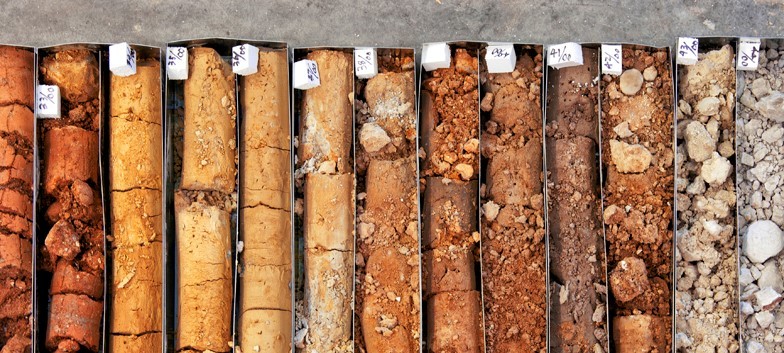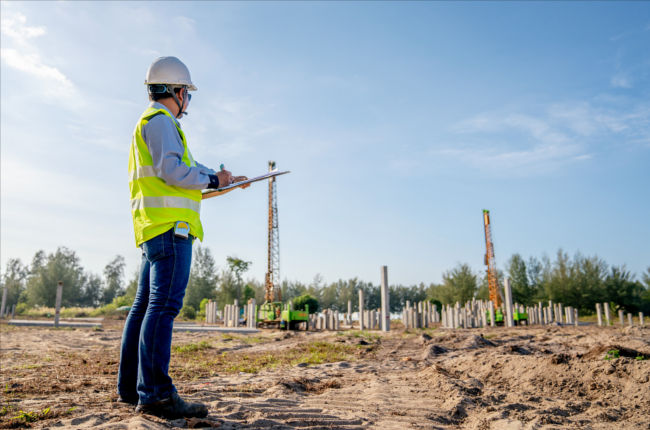Leading Consulting Civil Engineering Companies for Facilities Projects
Leading Consulting Civil Engineering Companies for Facilities Projects
Blog Article
Exploring the Necessary Duty of Consulting Engineers in Geotechnical Projects: A Thorough Review of Their Payments and Obligations
Consulting designers offer as pivotal numbers within geotechnical tasks, tasked with the complex duties of analyzing subsurface conditions and making certain the structural stability of building and constructions. As we discover the multifaceted contributions of seeking advice from designers, it becomes apparent that their participation is crucial to navigating the challenges fundamental in geotechnical ventures.
Review of Geotechnical Design
Geotechnical engineering is an important technique within civil design that concentrates on the habits of planet products and their communication with frameworks. This area incorporates the research of dirt, rock, groundwater, and the mechanics governing their buildings and actions. Geotechnical designers analyze the physical and chemical properties of these products to establish their suitability for different building projects, guaranteeing that structures are started on steady and dependable ground.

Furthermore, geotechnical designers must think about environmental aspects, such as dirt contamination and groundwater administration, to advertise sustainable growth. Their knowledge is essential in enhancing the layout and construction procedures, inevitably contributing to the long life and safety of civil engineering tasks.
Key Obligations of Consulting Engineers

In addition, they are accountable for creating style specifications and specs that adhere to regulatory standards and ideal techniques. This consists of examining site conditions and determining ideal building and construction techniques, which is important for reducing risks linked with ground instability.
Consulting engineers additionally work as intermediaries between various stakeholders, consisting of clients, service providers, and regulative bodies, facilitating clear interaction and collaboration throughout the task lifecycle. consulting civil engineering companies. Moreover, they provide skilled assistance throughout construction, making certain that geotechnical elements are appropriately attended to which any type of unpredicted difficulties are taken care of effectively. Ultimately, the diverse duties of speaking with designers are basic to the integrity and success of geotechnical jobs, affecting both safety and sustainability in building techniques
Site Assessments and Examinations
A comprehensive site evaluation is necessary for recognizing the subsurface conditions that affect geotechnical tasks. Consulting designers play a pivotal role in conducting these evaluations to guarantee the safety and security and viability go to these guys of building activities. This procedure generally entails a series of examinations, consisting of soil sampling, borehole boring, and geophysical surveys, to gather vital data on soil properties, groundwater levels, and the geological context of the website.
Engineers assess the gotten information to determine the prospective difficulties positioned by the subsurface conditions, such as soil instability or high groundwater degrees, which can influence the style and implementation of the task. In addition, website evaluations help in evaluating the presence of More Info impurities, which is critical for ecological compliance and ensuring public safety.
In addition, getting in touch with designers coordinate with multidisciplinary groups to incorporate findings from website examinations into more comprehensive task goals. Through strenuous paperwork and reporting, they give necessary insights that educate stakeholders regarding the suitability of the website for proposed growths. Eventually, the thoroughness of site evaluations lays the foundation for reliable planning and design services, mitigating threats connected with unexpected subsurface problems.
Design and Threat Management
After performing complete site evaluations, consulting designers concentrate on the style and threat administration facets of geotechnical projects. This stage is crucial as it makes certain that the engineered options are not just efficient yet also risk-free and lasting (consulting civil engineering companies). Engineers utilize their expertise to create layouts that resolve the details geotechnical conditions determined during the website analyses, consisting of dirt buildings, groundwater habits, and prospective threats
Risk management is essential to this procedure, as it entails identifying, examining, and mitigating possible risks related to the job. Designers use numerous analytical methods and modeling techniques to anticipate the habits of dirt and rock under various loading problems. By reviewing uncertainties and potential failure modes, they can suggest style adjustments that improve security and minimize danger.
In addition, consulting engineers ensure compliance with relevant codes and standards, which are important for reducing liabilities. They also prepare contingency plans to address unexpected obstacles that might emerge throughout building and construction. Via careful style and positive risk management, consulting engineers play an essential duty in making special info sure the security, performance, and longevity of geotechnical tasks, inevitably adding to the overall success of the construction undertaking.
Partnership With Job Stakeholders
Effective cooperation with job stakeholders is important for the success of geotechnical projects. Consulting designers play a critical role in promoting interaction among numerous celebrations, consisting of clients, contractors, governing authorities, and environmental specialists. This cooperation guarantees that all stakeholders have a clear understanding of project goals, timelines, and possible dangers.
Consulting designers are in charge of incorporating stakeholder input right into the style and execution of geotechnical services - consulting civil engineering companies. By proactively engaging with stakeholders, they can recognize problems early in the project lifecycle, allowing prompt modifications and mitigating potential problems. This proactive method not just fosters trust fund however additionally enhances task efficiency
Additionally, speaking with designers must browse the intricacies of regulatory conformity, ensuring that all geotechnical methods straighten with legal and environmental requirements. Their proficiency in this field is crucial in preserving open lines of interaction with regulatory bodies, thus assisting in smoother authorizations and permitting processes.
Final Thought

Report this page